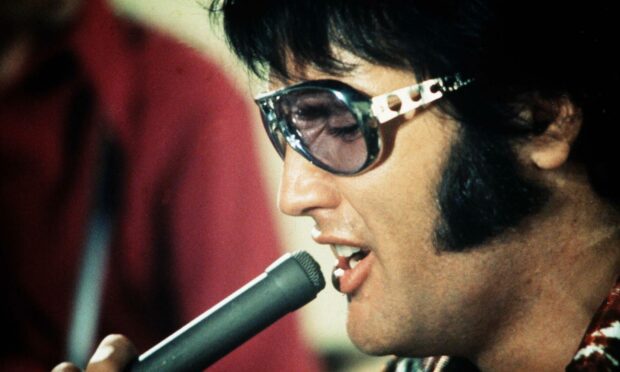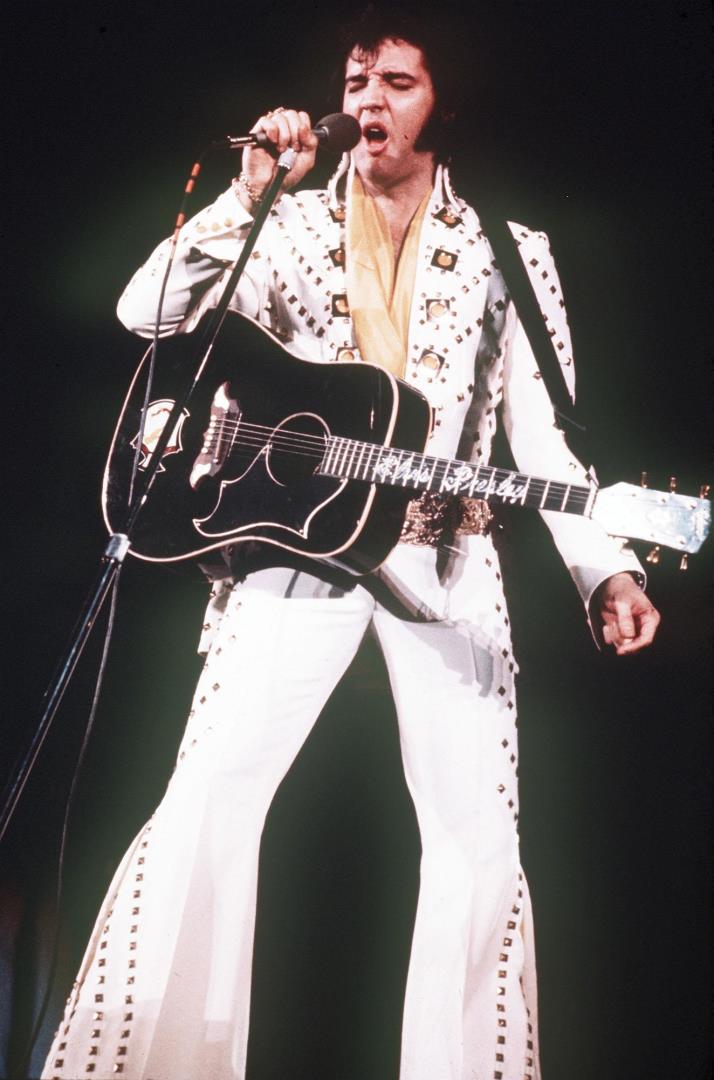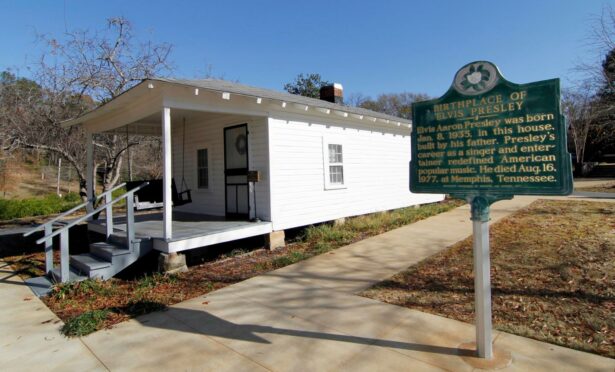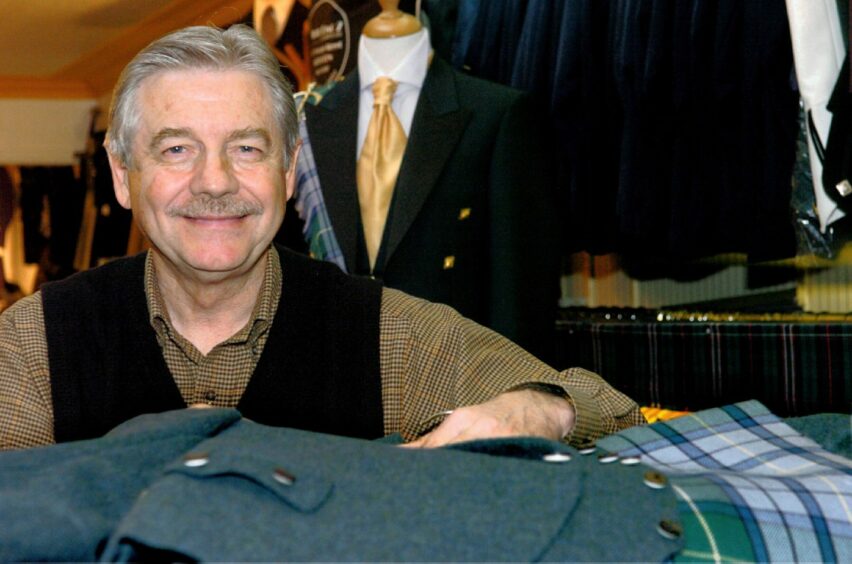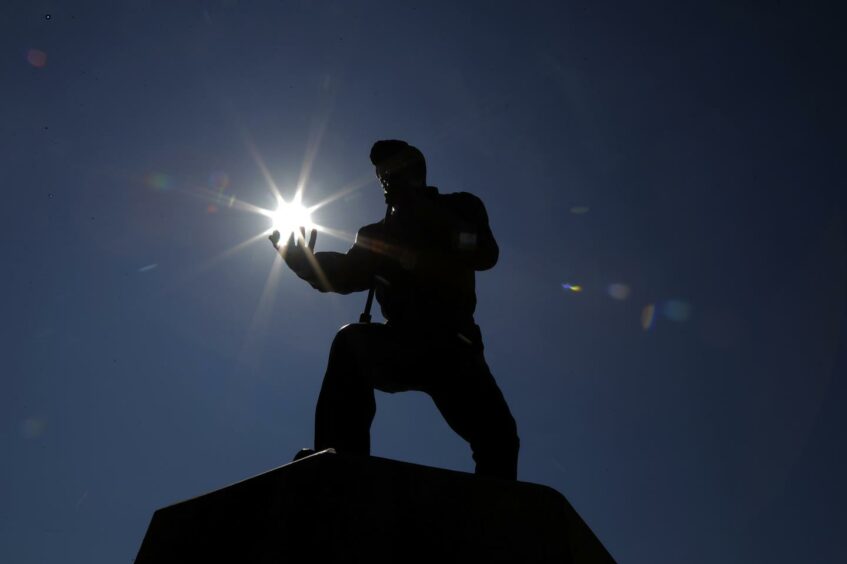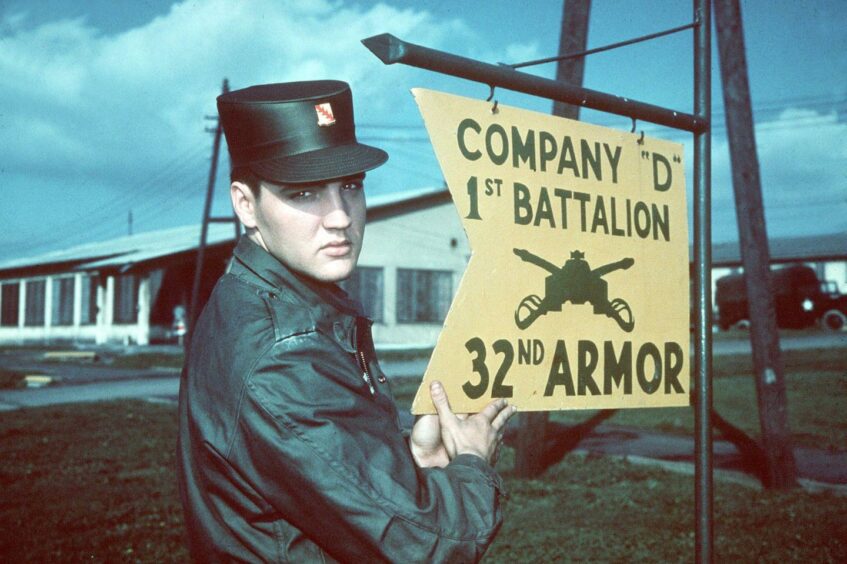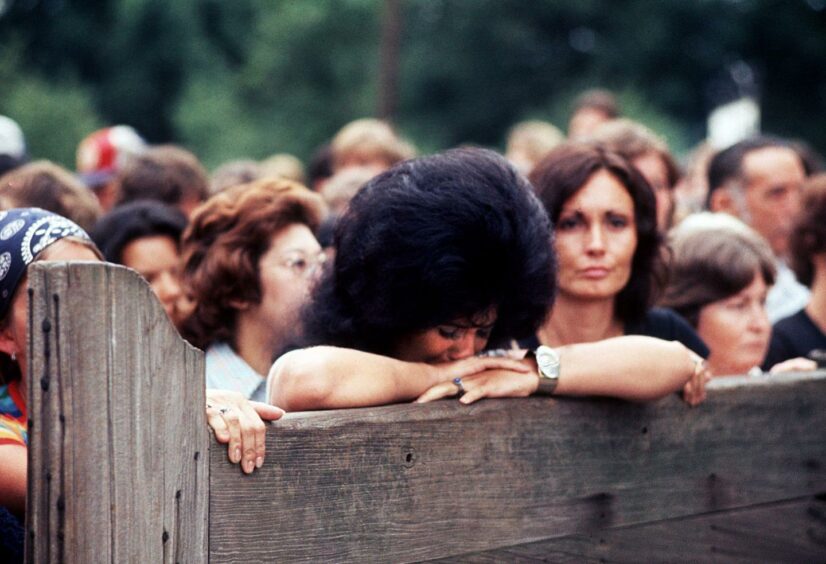Elvis Presley’s coffin was exhumed and taken to Graceland 44 years ago but his roots will always be in Aberdeenshire.
Elvis was a Broch loon, several times removed.
The King’s great-great-great-great-great-great-grandfather shook his hips in Aberdeenshire 300 years ago.
Old man Presley was wed in the village of Lonmay near Fraserburgh.
Apparently, parish records show that eight generations before Elvis was born in 1935, his ancestor Andrew Presley wed Elspeth Leg in Lonmay on August 27 1713.
The Presleys would have been married at the village’s old parish church, built in 1607 but now a ruin.
Their son, also called Andrew, became a blacksmith and was the first Presley to leave Scotland for America, in 1745, and settled in North Carolina.
The king in the north – Elvis’s Scottish roots
The Elvis link was uncovered by Greenock author Allan Morrison, who started looking into Presley’s past after hearing rumours of his Scottish ancestry.
Mr Morrison’s genealogical research traced the Presley family from its humble Scottish roots through eight generations and discovered ancestors who fought in the American Wars of Independence and the Civil War.
Another colourful character was Elvis’s great grandmother, Rosella Presley, a keen churchgoer who had 10 children out of wedlock.
One of her grandsons was Elvis’s father, Vernon Elvis Presley, who married Gladys Love Smith.
She gave birth to Elvis Aaron Presley on January 8 1935, in Tupelo, Mississippi.
He went on to sell an estimated one billion records worldwide, star in 31 feature films and win three Grammy music awards for his recordings of gospel songs.
The home of Elvis’s ancestors and the city where the king of rock and roll was born could not be more different.
Tupelo, in Mississippi, has 35,000 inhabitants and is a manufacturing, retail and rail distribution centre.
Lonmay has a population of around 1,500 and is best known for its tatties.
The fields in the parish – which sits roughly halfway between Fraserburgh and Peterhead – are famed for the quality of the potatoes they produce.
The area once had its own railway station – when the Buchan line was still open – but now it does not even have a post office.
Most of the Presleys living in Scotland during the 18th and 19th centuries were based in Lonmay and the nearby villages of New Deer, Old Deer and Tarves.
The singer’s family had always claimed to have Scottish roots, and Peter Haining’s 1987 book, Elvis In Private, contained a fairly detailed family tree, which supported the fact.
Check it out – Elvis tartan
Mike King, of Aberdeen-based kiltmaker Philip King, produced the Presley Of Lonmay tartan to honour the king of rock ‘n’ roll’s north-east of Scotland roots.
It consists of four colours: blue, grey, green and yellow.
The kilt even came complete with a sporran engraved with thistles and a bald eagle – marking the Scottish and American link.
Mike said: “We used blue to represent the nearby town of Peterhead – the Blue Toon – as well as grey for the skies, green for countryside grass, and yellow for local cornfields.
“It’s nice to know there is a connection with Scotland and Lonmay – and long should it continue.”
Curiously, Scotland was the only piece of UK soil Presley ever stepped on.
On March 3 1960, when he was returning home from military service with the US Army in Germany, he made a two-hour stopover at Prestwick Airport.
Stepping off the plane in his military uniform and descending the stairs, the 25-year-old hollered to the crowd below: “Where am I?”
“Prestwick!” came the response from the excited, screaming teenage girls, who had been tipped off about the visit.
Return to Sender
Elvis was the perfect gentleman – chatting, signing autographs and smiling while his picture was taken with fans.
And when roving reporter Ian Nelson asked if he could interview him, Elvis was more than happy to oblige.
“I lived in Prestwick at the time, a short distance from the airport,” the former staffer for the Scottish Daily Mail recalled a month before his death, aged 89, in 2009.
“The Americans had a base there and I had met quite a lot of them.
“The colonel knew I was always looking for stories and he phoned me to say there was a famous name arriving, so I nipped down.”
Ian’s swift trip would earn him the rare distinction of being the only British journalist to interview – and be photographed with – Elvis on British soil.
“Luckily, we had a small lounge to ourselves and we chatted away for over 20 minutes while the plane was refuelling,” he recalled.
We’ll meet you again, God bless, adios.”
Elvis to the audience as he leaves the stage at the end of what would be his final concert
“I thought he was charming, a very polite young man.
“He called me Sir. He was just like the kid next door.”
He avoided questions about his teenage girlfriend, Priscilla, but when Ian asked him if he would perform in Scotland, Elvis said: “I kind of like the idea of Scotland.
“I’m going to do a European tour and it would be nice to come back here.”
He never did.
By the end of the 1960s, rock and roll had undergone dramatic changes, and Elvis was no longer seen as relevant by American youth.
A 1968 television special won back many of his fans, but hits were harder to come by and Burning Love in 1972 was his final single to break into the Top 10.
The King’s last concert was held at the Market Square Arena in Indianapolis on June 26 1977, which was his 55th show of the year.
Elvis performed classics such as Jailhouse Rock, It’s Now or Never, Teddy Bear, Release Me and Hound Dog, as well as a poignant cover of Simon & Garfunkel’s Bridge over Troubled Water, before closing the concert with Can’t Help Falling in Love with You.
He told the audience: “We’ll meet you again, God bless, adios,” as he left the stage.
On the afternoon of August 16 1977, he was found unconscious in his Graceland mansion and rushed to the hospital, where he was pronounced dead.
He was 42.
Elvis was buried on August 18 1977 at Forest Hill Cemetery next to his mother, Gladys.
Unfortunately, graverobbers attempted to get to the 900-pound copper coffin inside its mausoleum.
On October 3 1977 family members moved both Elvis and his mother’s coffins to Graceland, forming a meditation garden.
With more than one billion albums sold around the world and thousands flocking to his Graceland home every year, interest in The King remains intense.
Lonmay is, indeed, a long way from Graceland, but this small hamlet has been woven into the mythology that surrounds the name of Elvis.
Lonmay Tender, Lonmay True.
